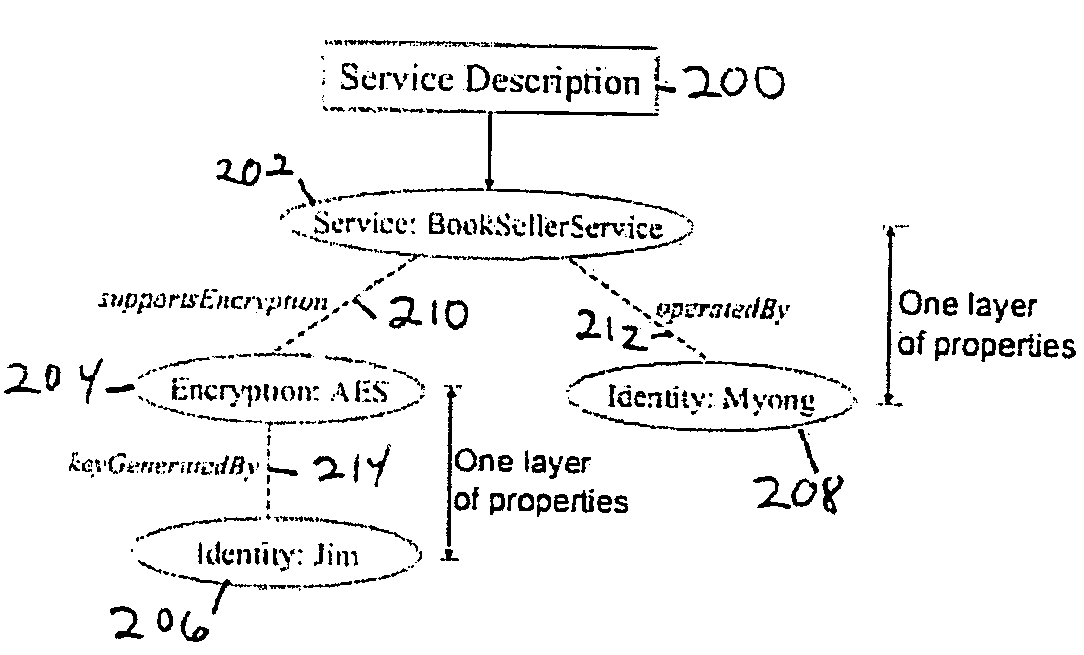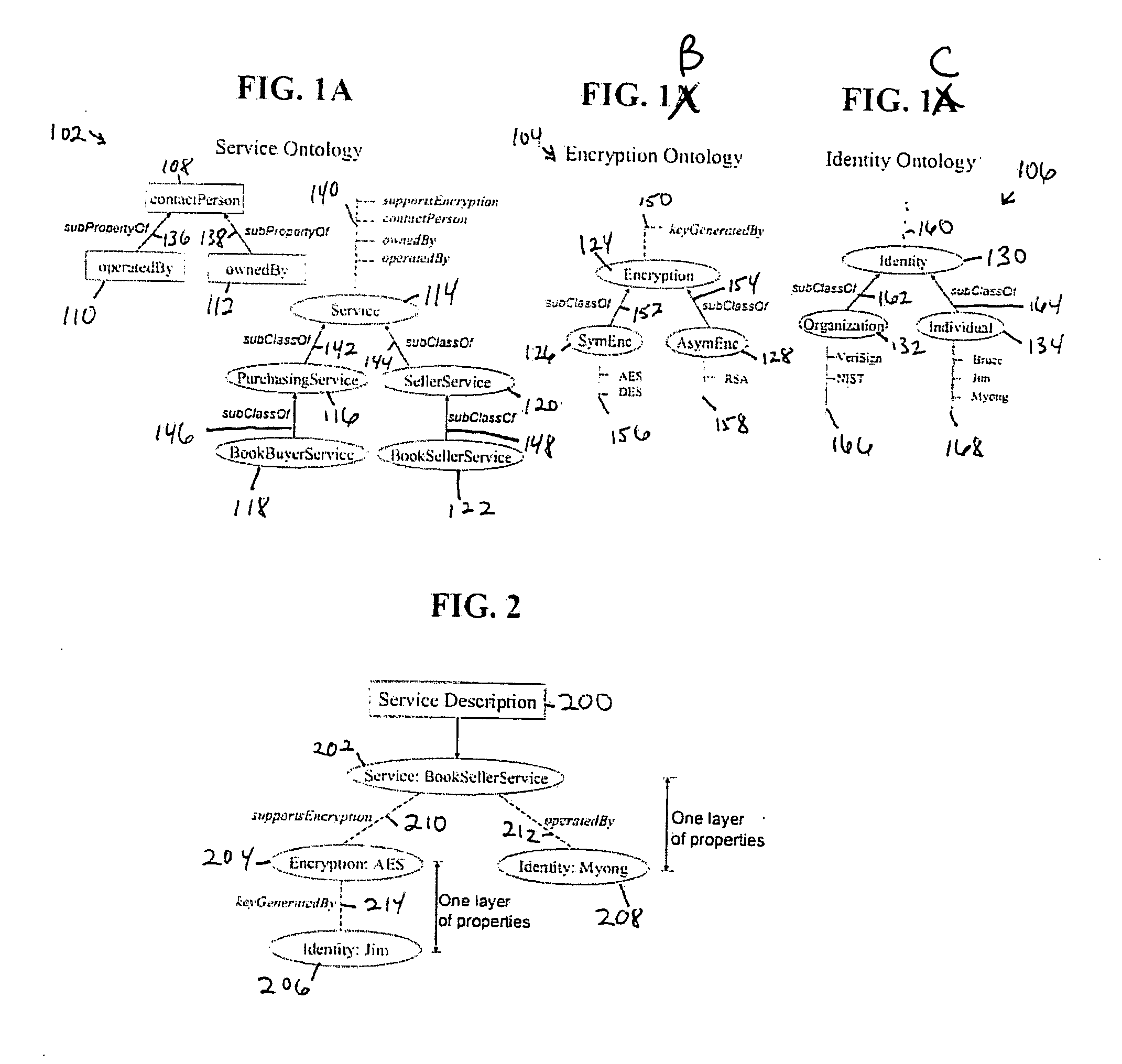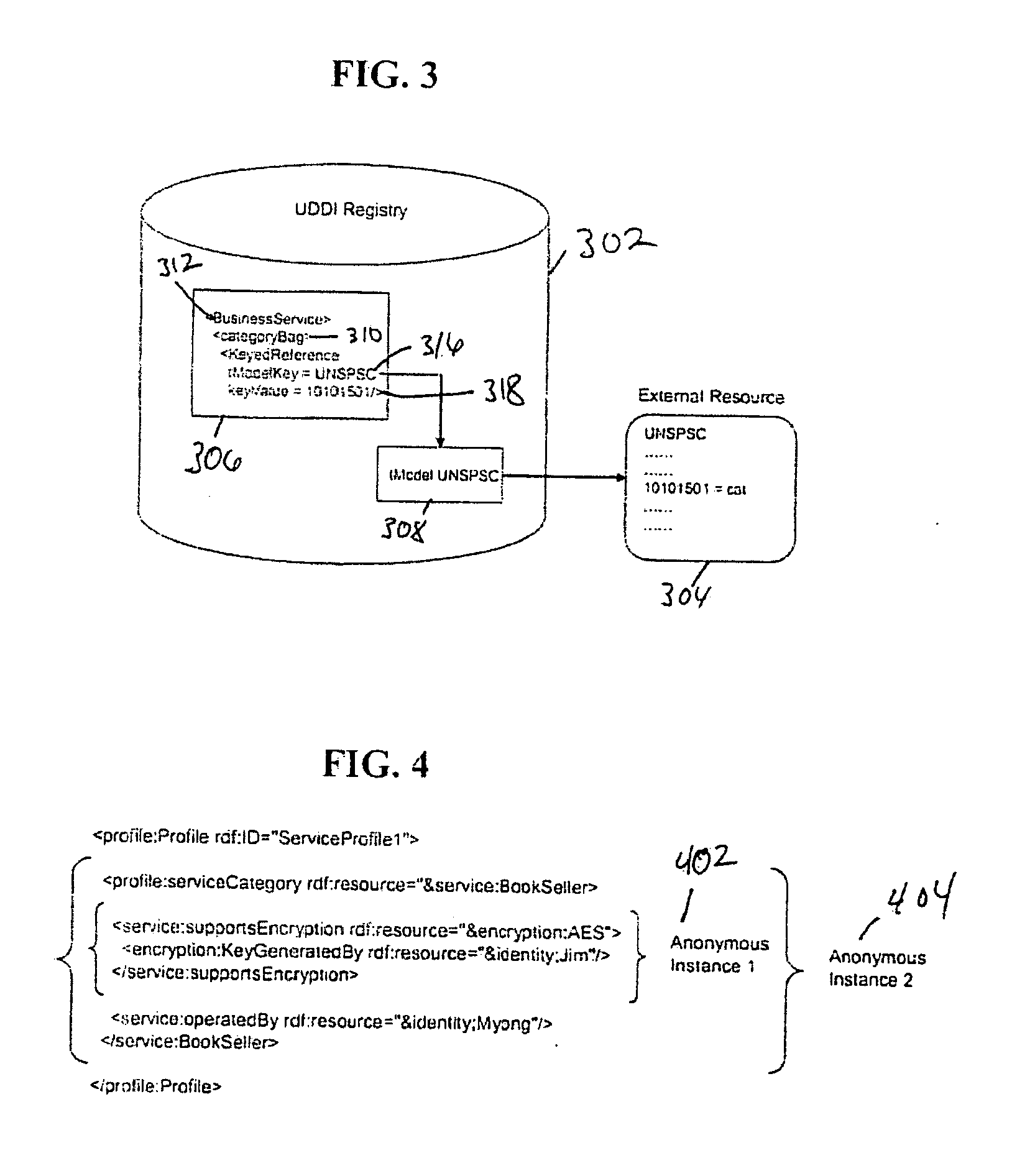System and Method for Adding Semantic Support to Existing Syntactic Infrastructure
a technology of semantic support and syntactic infrastructure, applied in the field of system and method for adding semantic support to existing syntactic infrastructure, can solve the problems of inability to store and process semantic service descriptions, the basic system of categorization and identification severely limits its usefulness, and the system of categorization and identification of the uddi registry fails to permit relationship searches
- Summary
- Abstract
- Description
- Claims
- Application Information
AI Technical Summary
Problems solved by technology
Method used
Image
Examples
Embodiment Construction
[0062] UDDI Overview
[0063] UDDI is intended to serve as a repository for Web service descriptions. To facilitate description and discovery of Web services, the UDDI specification defines a set of data models for storing Web service descriptions and an application program interface (API) for interacting with the registry. The core data model consists of objects describing the Web service (businessService), the service provider (businessEntity), and the service binding (bindingTemplate). In addition to the static text-based data fields, these data objects can incorporate metadata into the description by making references to tModels. TModels, or technical models, provide extensibility to the overall UDDI framework because they can be used to represent any concept or construct. Examples include standards, protocols, identification systems, categorization systems, and namespaces. The versatility of the tModel comes from the fact that it only needs to serve as a placeholder. Information ...
PUM
 Login to View More
Login to View More Abstract
Description
Claims
Application Information
 Login to View More
Login to View More - R&D
- Intellectual Property
- Life Sciences
- Materials
- Tech Scout
- Unparalleled Data Quality
- Higher Quality Content
- 60% Fewer Hallucinations
Browse by: Latest US Patents, China's latest patents, Technical Efficacy Thesaurus, Application Domain, Technology Topic, Popular Technical Reports.
© 2025 PatSnap. All rights reserved.Legal|Privacy policy|Modern Slavery Act Transparency Statement|Sitemap|About US| Contact US: help@patsnap.com



